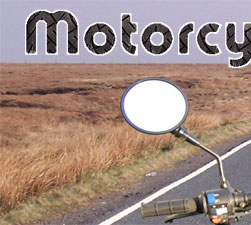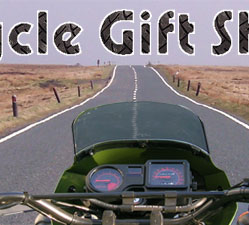|

|
Proper motorcycle maintenance and careful pre-ride inspections will help motorcycle riders reduce the chance of equipment failure. Unfortunately, there is always some potential for things to go wrong when riding your bike. It is critical to know what to do in the event of mechanical failure since often you will only have a split second to react.
Motorcycle Tire Failure
Modern motorcycle tires are much more advanced than in the past. Tubeless tires will blowout very infrequently, however, tire failure can be potentially dangerous on a vehicle with only two wheels. If the motorcycle's tire does fail, the first indication will be changes in steering. If the front tire loses air the steering will feel heavy and it will take more effort to turn the motorcycle and keep it balanced. If the rear motorcycle tire goes flat the vehicle will tend to sway from side or jerk around.
If you suspect your tire has gone flat do not panic but follow a few simple steps to bring the motorcycle to a halt safely.
- Hold the motorcycle handlegrips firmly but do not fight the wobble or weave that may develop.
- Ease off the motorcycle's throttle.
- If traffic will allow, avoid braking and downshifting and allow the motorcycle to slow gradually.
- If it is necessary to apply the brakes, use the brake on the good tire. Applying the brake to the failed tire can separate the tire from the rim causing immediate loss of control. If the motorcycle has integrated or linked brakes brake as slowly and gently as possible since it is not possible to apply the brakes to only one wheel.
- As the motorcycle slows to a manageable speed, move onto the shoulder or edge of the road, squeeze the clutch lever and stop the vehicle.
Help prevent motorcycle tire failure before it starts by maintaining the proper air pressure, regularly checking tread depth (generally the minimum motorcycle tire tread depth is 2mm) and check the tire rubber for cracks.
Motorcycle Chain Failure
A motorcycle chain is designed to transmit power from the engine to the motorcycle's rear wheel. While on the road two problems can arise: the chain can slip and the chain can break.
Motorcycle Chain Slippage
A motorcycle's chain will slip when either the chain becomes loose or one of the sprockets becomes worn or damaged. Generally, the chain will slip most under heavy acceleration or up steep inclines. In many cases, the motorcycle will remain operable for a short distance but you should pull off the road immediately and inspect the chain and sprockets. Tighten or replace the chain if it is loose; replace worn or bent sprockets immediately.
Motorcycle Chain Breakage
Normal use can wear and weaken a motorcycle chain over time and there is potential for breakage while the motorcycle is being operated. If the chain breaks, the motorcycle will immediately begin to decelerate since all power to the rear wheel will be lost. If time and traffic allow, use your momentum to pull off to the side of the road before braking to a complete stop. On very long trips, it can be a good idea to bring a spare chain to avoid being stranded without this critical component.
Even with proper lubrication and care, the chain will stretch over time. Check the motorcycle owner's manual to get the correct tolerances for chain tightness and the maximum stretch limits (usually there will be a maximum length for twenty chain links). If your chain is reaching the end of it's lifespan replace it right away to avoid the inconvenience and potential danger of failure on the road.
Broken Motorcycle Clutch Cable
Though motorcycle clutch
cables are pretty strong they can stretch and will occasionally
break. A broken clutch cable is inconvenient but usually
does not pose a significant danger to the motorcycle rider.
It is still possible to shift the motorcycle's sequential
transmission even without the clutch. It will take a little
more effort but you should be able to ride the motorbike
to a place were you can repair or replace the cable. When
slowing to a stop with a broken clutch cable, decelerate
slowly and downshift to match the engine speed to road speed.
Shift to neutral before coming to a stop to avoid stalling
the engine. To prevent the inconvenience of a broken clutch cable, regularly inspect your clutch cable and replace it when it starts to show signs of wear. Click here for a huge selection of OEM clutch cables. for a huge selection of OEM clutch cables.
|






